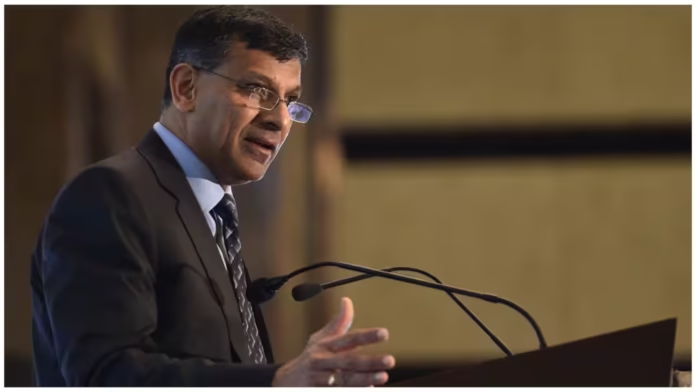Former Reserve Bank of India (RBI) Governor Raghuram Rajan has labeled the United States’ 50% tariffs on Indian goods, effective August 27, 2025, as a “wake-up call” for India. Imposed by President Donald Trump and targeting $60.2 billion in exports, these punitive measures have sparked concern over small exporters like shrimp farmers and textile manufacturers. Rajan’s response, articulated in recent interviews, urges India to diversify trade, unleash reforms, and reduce dependence on any single country. This article explores the context of his reaction, the implications, challenges, and opportunities for India’s economic strategy.
Context of Rajan’s Reaction
Incident Overview
-
Tariff Implementation: The 50% tariffs, including a 25% penalty for Russian oil purchases, took effect on August 27, 2025, hitting labor-intensive sectors hard.
-
Rajan’s Statement: In an India Today TV interview, Rajan called it a “wake-up call,” highlighting the need for 8-8.5% growth to employ youth.
-
Economic Impact: The Global Trade Research Initiative warns of a 70% collapse in exports like textiles and shrimp.
Strategic Background
-
Rajan’s Expertise: As a former RBI Governor (2013-2016) and IMF Chief Economist, Rajan brings a global perspective to India’s trade challenges.
-
Trade Weaponization: He notes that trade, investment, and finance are increasingly used as geopolitical tools, urging caution.
-
US-India Tensions: The tariffs reflect Trump’s punitive stance, straining relations despite past Modi-Trump rapport.
National Context
-
Export Reliance: The US accounts for a significant share of India’s $437 billion exports in FY25, making diversification urgent.
-
Geopolitical Angle: India’s Russian oil imports, though not sanctioned, have drawn US ire, complicating negotiations.
-
Public Sentiment: X posts suggest mixed views, with some seeing it as a chance for reform, others as US overreach.
Implications of Rajan’s Reaction
Economic Impact
-
Diversification Push: Expanding to markets like Europe, Africa, and Asia could mitigate the $60.2 billion loss.
-
Reform Catalyst: Rajan’s call for 8-8.5% growth targets youth employment, vital for India’s demographic dividend.
-
Exporter Relief: Supporting shrimp farmers and textile manufacturers could stabilize livelihoods.
Social and Institutional Impact
-
Community Resilience: Reduced US dependence may empower local industries and workers.
-
Policy Shift: Rajan’s advice could influence government priorities, aligning with Modi’s self-reliance agenda.
-
Global Standing: Strategic autonomy might enhance India’s negotiating power internationally.
Policy and Operational Impact
-
Trade Policy Overhaul: Reforms in export-import procedures and tariffs could streamline trade.
-
Investment Focus: Diversifying markets may attract new foreign investment.
-
Geopolitical Strategy: Balancing US ties with Eastern and African partnerships could redefine India’s role.
Challenges
Operational Hurdles
-
Market Transition: Shifting exports to 40 new countries requires significant logistical and marketing efforts.
-
Reform Resistance: Bureaucratic inertia may delay economic restructuring.
-
Capacity Constraints: Scaling production for new markets could strain resources.
Economic and Social Concerns
-
Job Losses: A 70% export collapse risks unemployment if diversification lags.
-
Regional Disparity: Benefits may unevenly reach states like Gujarat and Tamil Nadu.
-
Consumer Impact: Focus on exports might raise domestic prices.
Policy Risks
-
US Retaliation: Further tariffs could escalate trade disputes.
-
Negotiation Delays: FTA talks with the EU and others may stall, delaying relief.
-
Political Backlash: Reform push might face opposition from vested interests.
Opportunities
Economic Advancement
-
Market Expansion: Access to 40 countries could push exports beyond $437 billion.
-
Growth Potential: Achieving 8-8.5% growth could create millions of jobs.
-
Investment Boost: Trade success may draw global capital.
Social and Institutional Growth
-
Youth Empowerment: Employment growth strengthens social stability.
-
Industry Support: Targeted aid for exporters like shrimp farmers could revive sectors.
-
Global Trust: Successful diversification may enhance India’s economic credibility.
Policy Leadership and Innovation
-
Trade Model: India’s strategy could set a precedent for resilient economies.
-
Digital Integration: Leveraging tech for export efficiency aligns with global trends.
-
Geopolitical Leverage: Reduced US reliance strengthens India’s strategic autonomy.



